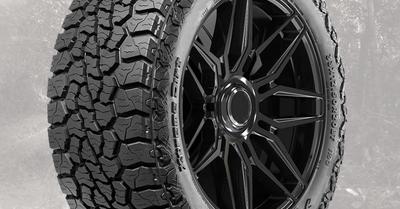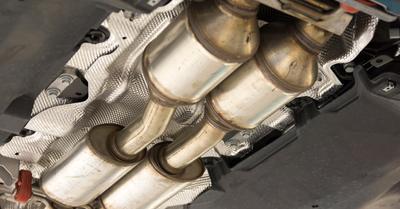Table of Contents
Risks of Driving With Cords Showing
Driving with cords showing on your tires is not only risky, but it can also lead to some serious consequences. In this section, I'll discuss the various risks associated with driving on tires with exposed cords, and why it's essential to address this issue as soon as possible.
Decreased Traction
One of the most immediate effects of driving with cords showing is the significant reduction in traction. Just like bald tires, tires with cords showing on them pose a great risk to your traction.
This can make it more difficult for me to maintain control of my vehicle, especially in adverse weather conditions or when navigating tight turns.
With reduced traction, I'm more likely to slip and slide on the road, putting myself and others at risk of an accident.
Increased Risk of Blowouts
Driving on tires with exposed cords also increases the risk of a sudden blowout.
When the tire blows, it can lead to an abrupt loss of control and potentially cause a serious accident.
The heat generated while driving on tires with cords exposed can exacerbate this issue.
Uneven Tire Wear
When cords are visible, it's a clear sign that my tire wear is uneven.
This can result in improper wheel alignment, reduced fuel efficiency, and an overall negative effect on my vehicle's performance.
Furthermore, uneven tire wear can lead to other, more severe problems if left unaddressed.
Potential for Legal Consequences
Lastly, driving on tires with cords showing isn't just dangerous; it can also come with legal repercussions.
In some jurisdictions, it's against the law to drive with exposed cords, as it poses a significant risk not only to me, but also to other drivers on the road.
Therefore, it's vital to replace any worn-out tires as soon as possible to avoid potential fines or other legal issues.
Causes of Cords Showing
Seeing cords showing/wire showing on tire can be a clear indicator that something is wrong with your tire.
In this section, we will explore the primary causes behind cords showing on tires, focusing on excessive wear, defective tires, and incorrect inflation.
Excessive Wear
Excessive wear is the most common cause of cords showing on tires. Once tires meet the minimum legal tread depth, they start to become dangerous to drive on.
As I drive my car, the tire tread naturally wears down over time. However, if the wear becomes too extreme, it can expose the underlying cords, which are part of the tire's internal structure.
This is a sign that the tires have been worn far beyond their designed purpose and are no longer safe to drive on. Driving on such tires is not only unsafe but also illegal.
Defective Tires
Sometimes, cords may show on a tire not because of wear, but due to manufacturing defects.
It's crucial for me to keep an eye on my tires and check for any signs of irregular wear patterns.
When defects are present, the tire's structure can be compromised, leading to the cords being exposed.
In these cases, replacing the defective tire at your nearest tire shop with a new one is the best course of action to ensure safe driving.
Incorrect Inflation
Another common reason for cords showing on my tires is incorrect air pressure.
Both overinflation and underinflation can contribute to premature tire wear and exposing the cords.
If my tires are underinflated, it causes excessive friction, leading to faster wear out.
Overinflation, on the other hand, can cause the tire's center to wear more rapidly, making it uneven and eventually exposing the cords.
To prevent this issue, I make it a habit to regularly check my tire pressure and ensure it falls within the manufacturer's recommended range.
Maintaining proper tire pressure not only helps prolong the life of my tires but also contributes to better fuel economy and overall vehicle performance.
Tips to Prevent Cords Showing
As a car owner, I've found that preventing cords from showing on your tires is crucial for maintaining their longevity and ensuring a safe driving experience.
Here, I'll share some tips that have helped me in the past, with a focus on regular tire maintenance, proper inflation, rotation, and balancing, and keeping tire treads intact.
Regular Tire Maintenance
One of the most effective ways I've discovered to avoid cords showing is by conducting regular tire maintenance.
By inspecting my tires for cuts, punctures, and other damages, I can address any issues before they cause excessive wear.
As well, keeping an eye on tire tread depth is an important factor in maintaining regular tire maintenance.
Proper Inflation
Another tip I've found helpful is to maintain proper tire inflation.
Inadequate tire pressure can cause uneven wear on tire tread, eventually leading to cords becoming exposed. Worn tires will cause you to eventually need tire replacement.
I frequently check my tire pressure and adjust it according to the manufacturer's recommendations.
This helps me keep my tires in good shape, reducing the risk of cords showing and subsequent tire failure.
It's not safe to drive more than 80-100 miles on a tire with cords showing, so proper inflation is crucial.
Rotation and Balancing
I found that rotating and balancing my tires regularly is essential in preventing cords from showing.
Rotation and balance may fix issues that can be confused with poor wheel alignment, but don’t be mistaken.
Tire rotation helps distribute the wear evenly across all four tires, reducing the likelihood of premature wear on any single tire.
Driving with cords showing is so dangerous that the only acceptable drive I should be making on such tires is to the nearest repair shop for a replacement.
By balancing my tires, I've noticed that it prevents additional strain, which could lead to cords showing prematurely.
Balancing ensures that all tires are sharing the load equally, reducing the potential for excessive wear on any single tire.
About The Author

Christopher Sparks
Christopher Sparks has been servicing vehicles since 2012. After completing the automotive studies program at Camden County College, he was awarded an Associates's Degree in Applied Science. His first job was a lube-tech at Jiffy Lube, and is currently an independent B-Technician servicing vehicles for the United States Postal Service. Christopher is ASE certified and loves rebuilding engines.
Read more about Christopher Sparks







